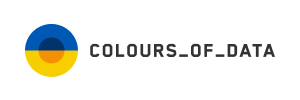JustPark is a park and pay app – a sharing economy digital platform akin to what Airbnb is in the real estate world. It links 5.5 million active drivers with over 45,000 listed parking locations in the United Kingdom via digital touchpoints.
JustPark offers an opportunity to individual space owners that have an extra parking space or two. They can list these online with JustPark to establish an additional stream of income. It also offers a great additional revenue stream for big parking space owners such as hotels and churches that have plenty of parking space with variable demand. It offers significant improvements for the end users too. A driver can book a parking space in advance and in minutes without the need to use cash in the comfort of their car and their smartphone.
To handle the personalised and automated communication across its various channels with a large and active user base, JustPark relies on Bloomreach Engagement, a CDP and Automated Marketing platform. This platform unifies behavioral data from the app, the web, marketing communication, driver’s vehicle data and bookings into a single customer view. In addition to the data tracking aspect, Bloomreach powers many automated email and mobile notification flows as well as JustPark’s campaign reporting, A/B testing and in-app targeted “pop-ups”. This tech-stack is new and there aren’t that many specialists available to hire and JustPark felt that it wasn’t using the tech stack to their full potential.
Colours of Data and Datacop were brought in to JustPark to audit their use of their CDP tech stack with the aim to see how to maximise the value of the investment into unification of customer data. This involved the evaluation of the existing data architecture and use-cases for which Bloomreach was being used and then the identification of issues and our recommended solutions. The audit showed that the improvement of one of the existing use-cases in particular - the so called “4-Week Vehicle MOT Expiry Reminder” flow could bring the highest amount of value in the shortest period of time.
This use-case is a flow sends 4 weeks, 2 weeks and 1 week before a user’s vehicle’s MOT certificate expires an email as well as a mobile push notification. If the user clicks through on either the email or the push notification - they are redirected to a personalised landing page that has pre-filtered results based on the user’s vehicle and home location information provided to JustPark by the user. This saves time for the user as well as reminds the less-organised car owners to about their MOT responsibility.






